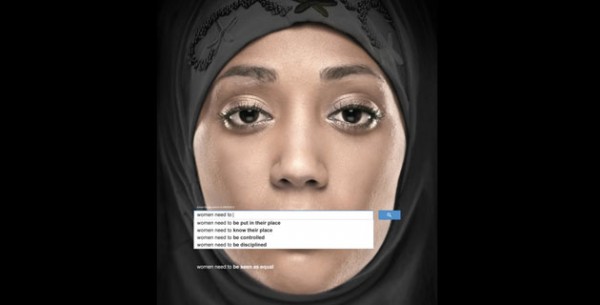
While questions of diversity swirl around the global advertising industry, can adland also be accused of racism in the work it produces?
If nothing else, the scandal surrounding J.Walter Thompson’s former global chief executive Gustavo Martinez (see page 20) has once again raised the issue of racism in advertising.
Not only can the industry globally be accused of racism and a lack of diversity, but the work it produces too is frequently accused of peddling a white, Western view of beauty. Where all we aspire to is that personified by the white middle classes.
Kathy Deliovsky, a professor at Brock University in Canada, has written widely on racialised beauty norms and how they produce a cultural discourse that racially codes femininity and beauty. For her, white patriarchal discourse represents white women as the ‘benchmark woman’. And this is not restricted to Europe and the United States. Just look around you and see how the advertising landscape is dominated by white models and fair-skinned Arabs.
So is the advertising industry racist? Or simply responding to society at large?
“From an new person’s point of view I don’t see many dark-skinned models used to portray a Saudi family or a dark-skinned male model used to promote some energy drink,” says Paul Shearer, group chief creative officer at Memac Ogilvy MENA. “But, the question is, are Arabs aware of it? Does a Saudi, Kuwaiti or Emirati feel like they’re unrepresented? I don’t think so.
“All the local people I have met don’t seem to be aware or indeed racist but more attracted to Western culture. Does it stop the ad from reaching its audience? I don’t think so, though I think it would be a move appreciated by the audience.”
For Walid Kanaan, chief creative officer at TBWA\Raad, advertising in the digital, consumer-generated age has created a less stereotypical approach to race representation. “Ads used to work as a source of aspiration, which indirectly dictated certain parameters and characteristics on society,” he says. “Actors and the cast had to look perfect and most of the brands ended up adopting racial stereotypes to invoke identification with the product.
“Since the consumer took over – empowered by digital and social media platforms – advertising has had to reflect a more realistic, contextual, credible and insightful approach. In the 21st century, consumers are refusing stereotypes and fake representation of their society. They simply want to value the reality.
“In today’s adland, real consumers are replacing plastic-actors, the ordinary is replacing perfection, and reality is replacing fiction. Stereotypes will probably not disappear, but it won’t be glorified like it used to be.”
Sasan Saeidi, managing director at FP7/UAE, tends to agree. “So the question is if adland or advertising is racist today: a very tough question that can’t have a simple answer, as we know already.
“Advertising is a reflection of life, and in today’s societies racism still exists. It’s everywhere, whether you are looking at elections on CNN or ad campaigns from anywhere. But in adland it’s more stereotyping versus racism, influenced by societal pressures.
“Advertising in our world today is a modern art form combined with science; and there is nothing racist that should get in front of art and ideas. Nothing. Our industry should be, and has to be, based on talent and ideas alone; and so I firmly believe that talent has no gender, nor race, nor affiliation. It has to come from everywhere and anywhere; and whoever has it and provides it, should be honoured and recognised. Period.
“There is for-sure an underlying issue that we still have in our world today; but we need to be brave and stand up for the right things and be firm about them. The more folks that can do this, the better we will become.”










